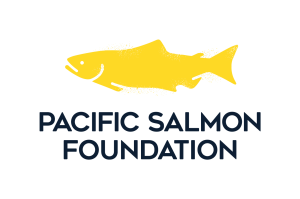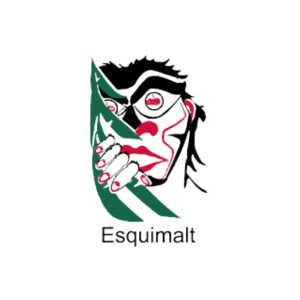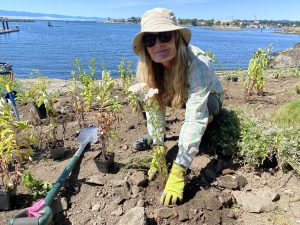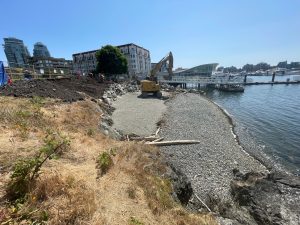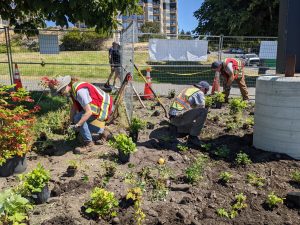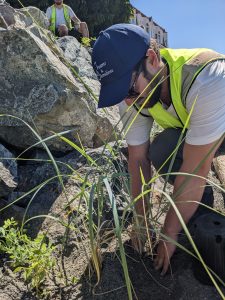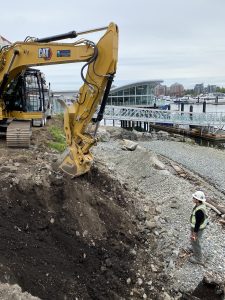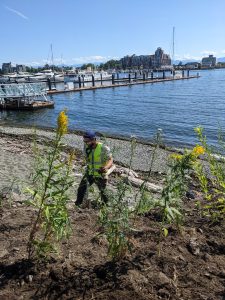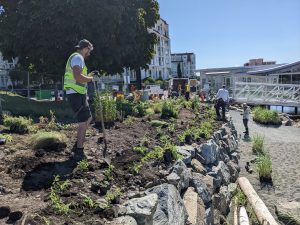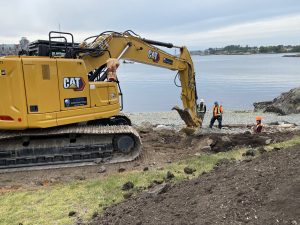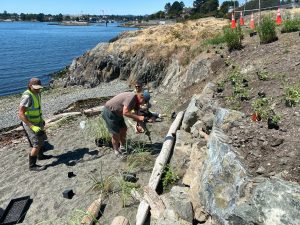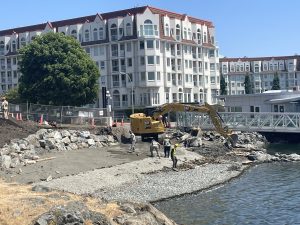Songhees Walkway Pocket Beach

The Shoreline Restoration Project at Songhees Walkway Pocket Beach, delivered by Peninsula Streams Society, the City of Victoria, Songhees Nation, Esquimalt Nation, Pacific Salmon Foundation, the Stewardship Centre for BC, Ralmax Group of Companies, and Salish Sea Industrial Services is a testament to the power of partnership, and the importance of restoring the culturally and ecologically significant shorelines around us.
A part of the Resilient Coasts for Salmon Program, this project serves as a key demonstration site for the Green Shores For Shoreline Development and its principles of restoring physical processes, enhancing shoreline habitat, reducing pollution, and reducing cumulative impacts on shoreline environments.
This project is part of the important movement away from traditional engineering approaches toward nature-based solutions in shoreline restoration. It is also a part of our commitment to the call of the UN Decade on Ecosystem Restoration (2021-2030), which aims to protect and revive ecosystems around the world, for the benefit of people and nature.
Restoring the Shore
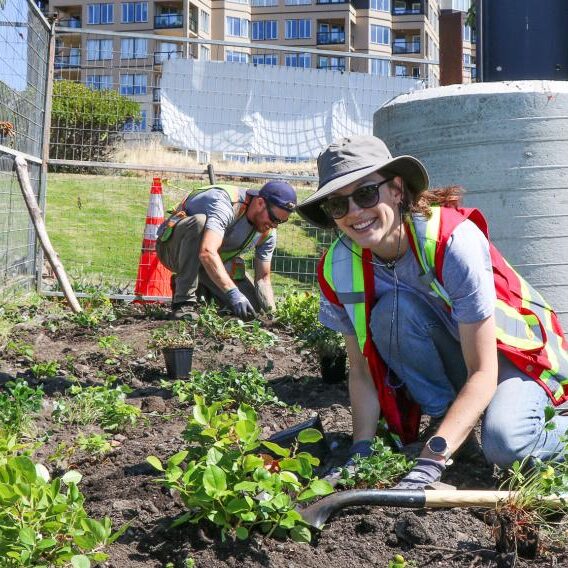

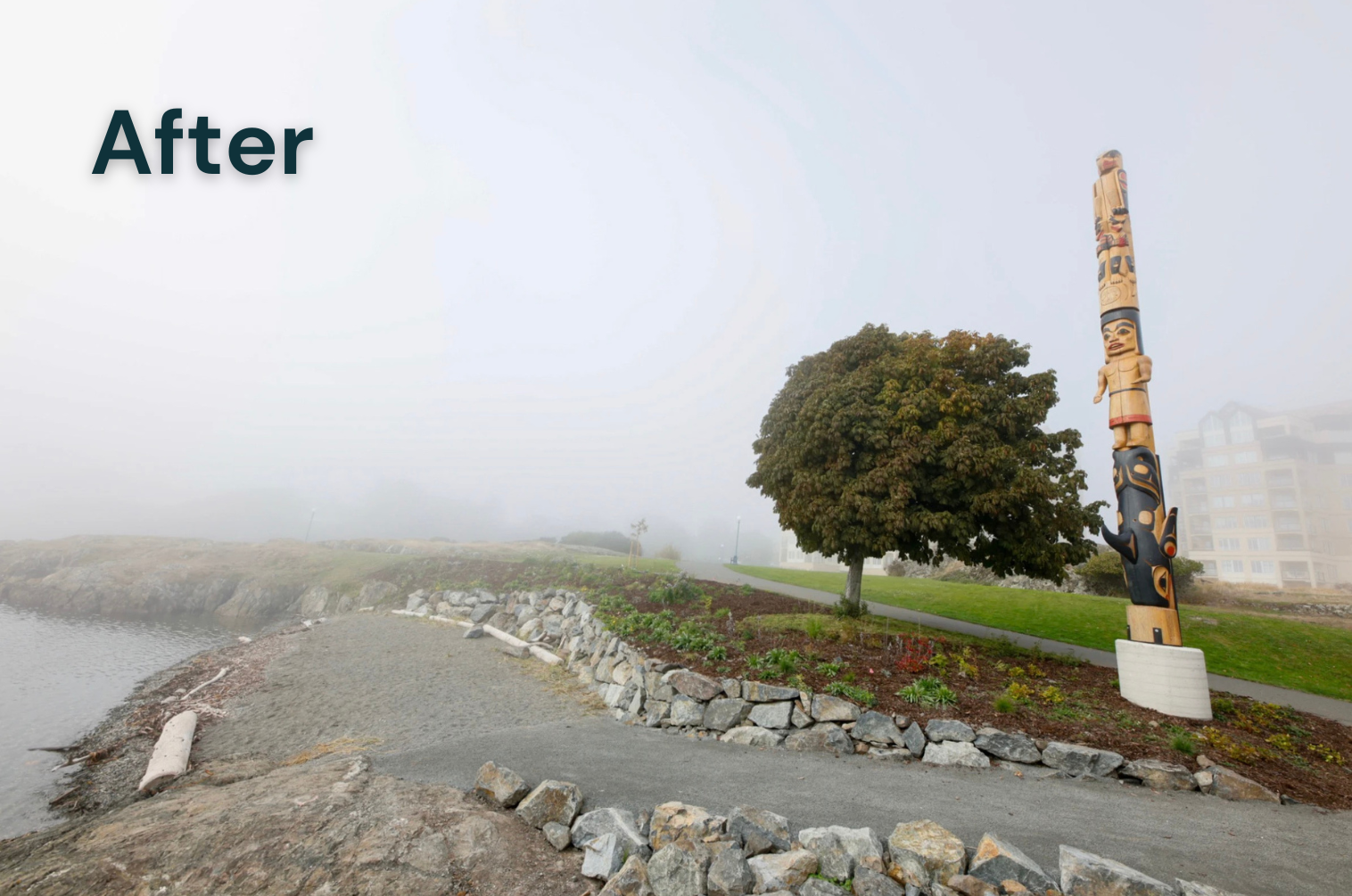
This project is more than just restoration; it's a way to share and promote the rich Indigenous history and use of this important cultural heritage site. It is also a testament to the effectiveness of nature-based solutions in the Salish Sea. Located at the heart of an urban center and supported by local and regional ENGOs, this endeavor showcases the power of shoreline enhancement in the Salish Sea.
But the benefits don't stop there! By restoring marine riparian vegetation, we're fostering connectivity for other backshore areas of ecological significance and creating a haven for pollinating insects and birds right within the city limits. With signage installation and stewardship opportunities, this project empowers residents of the City of Victoria, the Songhees Nation, and the Esquimalt Nation to engage with and protect this vital cultural and ecological site.
"This project is a great demonstration of how soft shore and hybrid approaches to shoreline protection can provide opportunities to increase ecological and cultural values to a site."
(Kyle Armstrong, Executive Director)
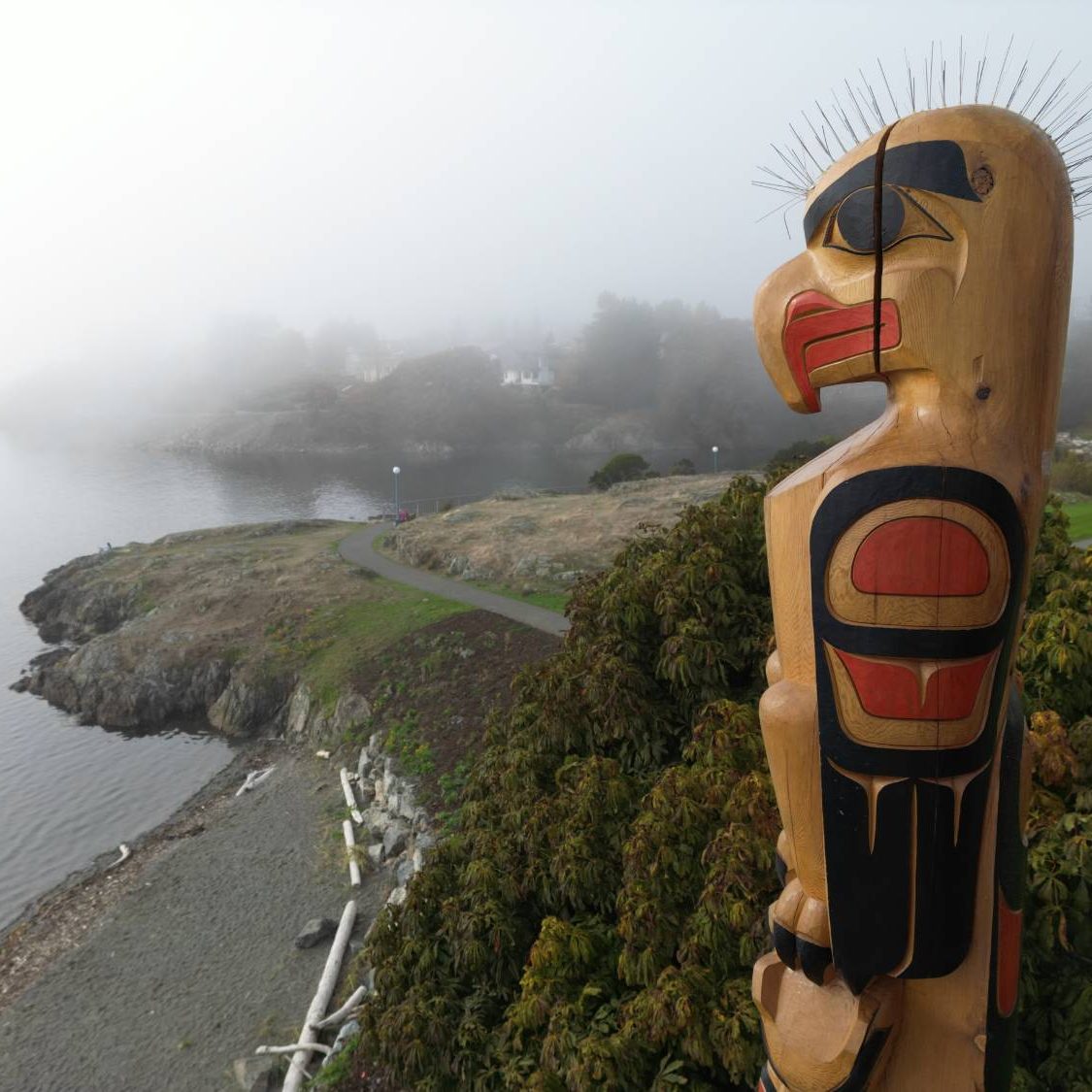
Established as part of the Songhees Reserve in 1853-1911, the site saw bustling activity as lək̓ʷəŋən residents and visiting families camped on the beaches, engaging in local fishing, cannery, and trading activities. However, the landscape changed dramatically in the 1930s with extensive filling of Lime Bay and Mud Bay for harbor development and industries, leaving behind a significantly altered remnant of its once expansive cultural and ecological significance.
The restoration project's historical review reveals layers of cultural heritage buried beneath industrial endeavors. However, with a keen focus on preserving both ecological and cultural values, we embarked on a journey to revive this vital piece of history.
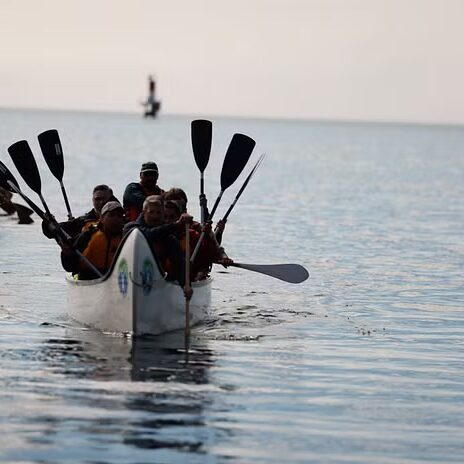
(Right) The shell of an Olympia Oyster, our only native species of oyster, which the harbour and gorge were once abundant with. Now a red-listed endangered species. This shell was found in backshore midden materials, telling us it was an important food item of the lək̓ʷəŋən People.
A Place of Welcome
The Songhees Walkway Pocket Beach holds significant cultural importance within the traditional territories of the lək̓ʷəŋən People, including the Songhees Nation and Esquimalt Nation. Once a bustling hub of cultural activities, it was a place where guests were warmly welcomed in the traditional Salish manner. Today, a welcome pole proudly overlooks the revitalized shoreline.
Historically, this area was vital for launching and landing traditional watercraft, such as Western redcedar dugout canoes, owing to its sheltered and productive shorelines. Teeming with thriving kelp forests, shellfish communities, and eelgrass meadows, it was an ideal spawning ground for forage fish like Pacific Herring, sand lance, and Pacific surf smelt.
"It was a gathering place for First Nations visitors from up and down the coast who came for many reasons: to participate in memorial, marriage, gift-giving and naming ceremonies; to trade goods; and to work for wages in the growing city of Victoria.”*
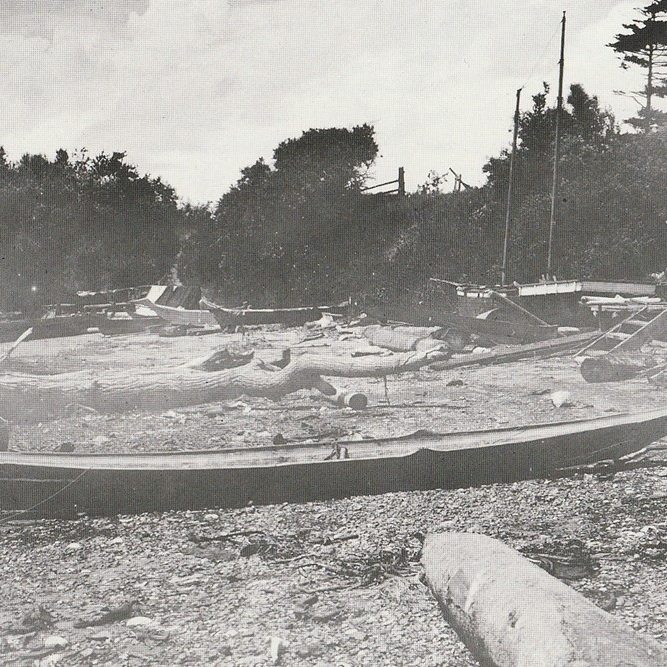
Continue Your Learning Journey:
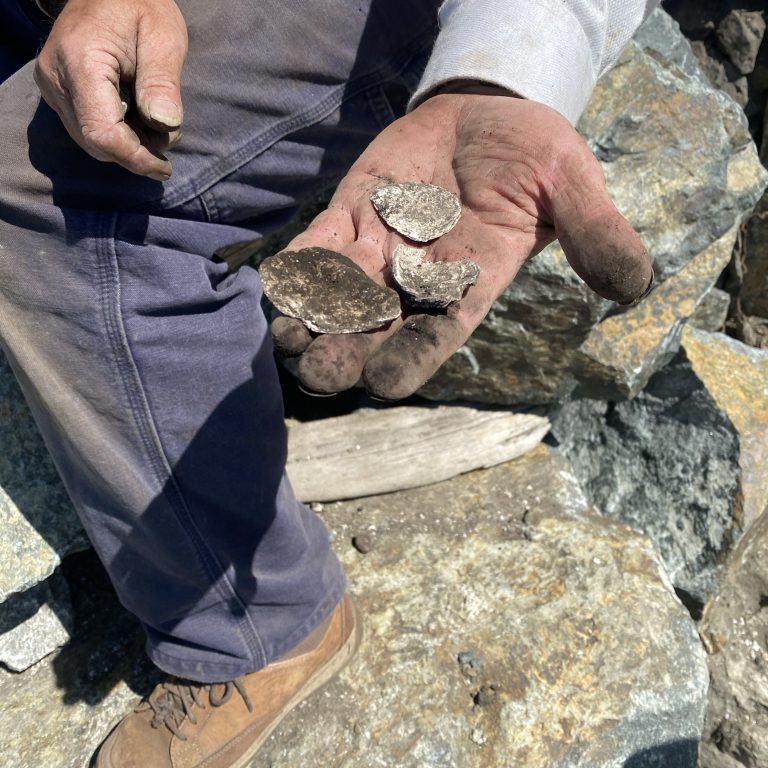
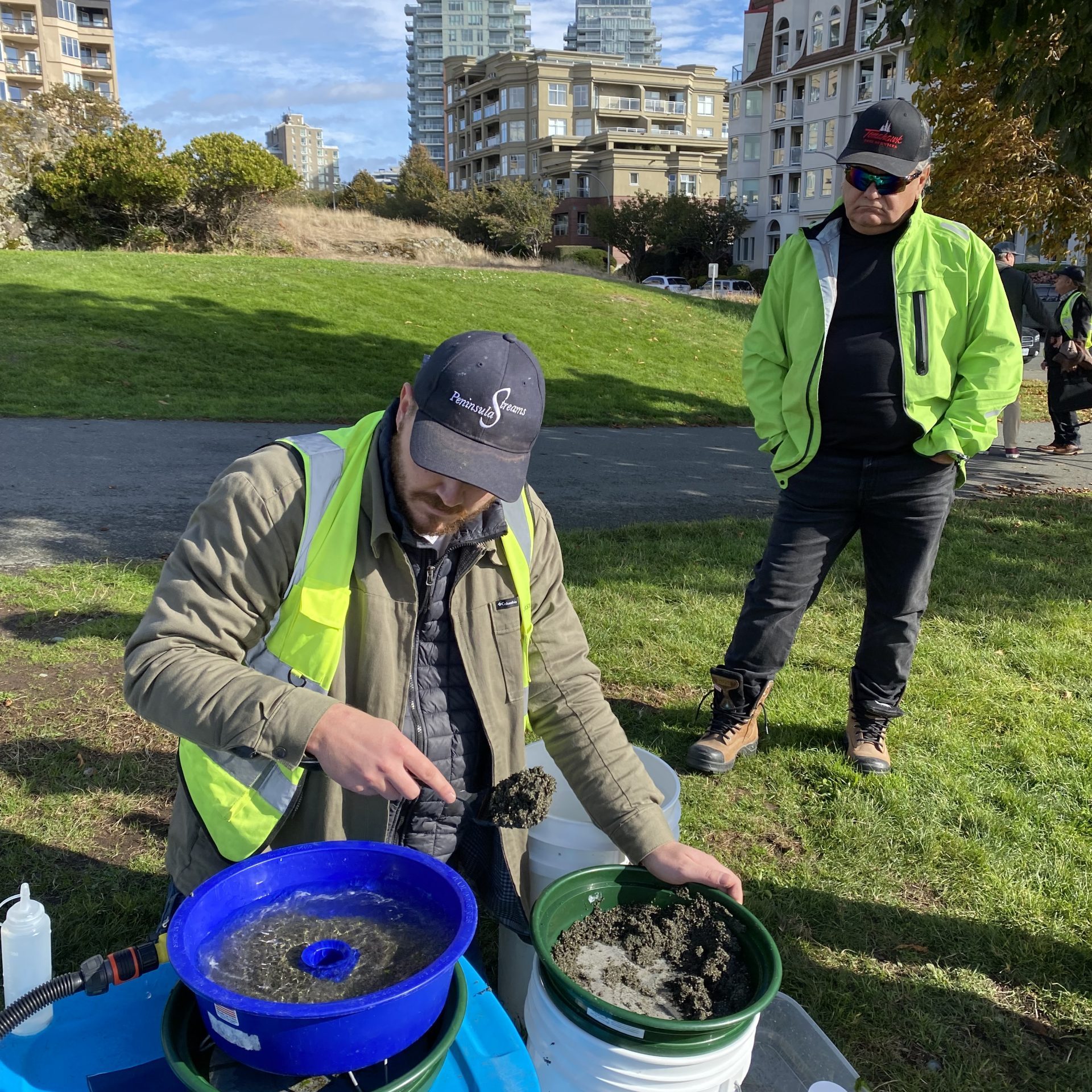
Forage fish beach spawning surveys are important for increasing our knowledge of Pacific sand lance and surf smelt spawning behaviour and their use of intertidal beaches for spawning.
These surveys are undertaken by Peninsula Streams staff and trained volunteers, through our Beach Education and Conservation of Habitat (BEACH) Program. Shoreline monitoring is a crucial way to understand the threats our shores face. In the case of the Songhees Walkway Pocket Beach, our shoreline monitoring tells us that nature-based solutions work. If you make room for nature, it will come back!
The Return of Forage Fish
The success of this restoration project was signaled by the identification of forage fish eggs on the beach, just weeks after Phase 1 was completed.
Forage fish are small schooling fish, such as Pacific sand lance, surf smelt, Pacific herring, and anchovy. These species are critical components of the ocean food web, feeding on phytoplankton and zooplankton and transferring this energy to salmon, seabirds, marine mammals, and humans.
While often abundant, forage fish spawning beaches are undergoing a coastal squeeze, experiencing the effects of shoreline development on land and climatic conditions from the sea.
“It was really cool last winter — we had smelt come back after taking those actions and it was really uplifting,” he said. “It was like if you make room for nature, it will come back.”*
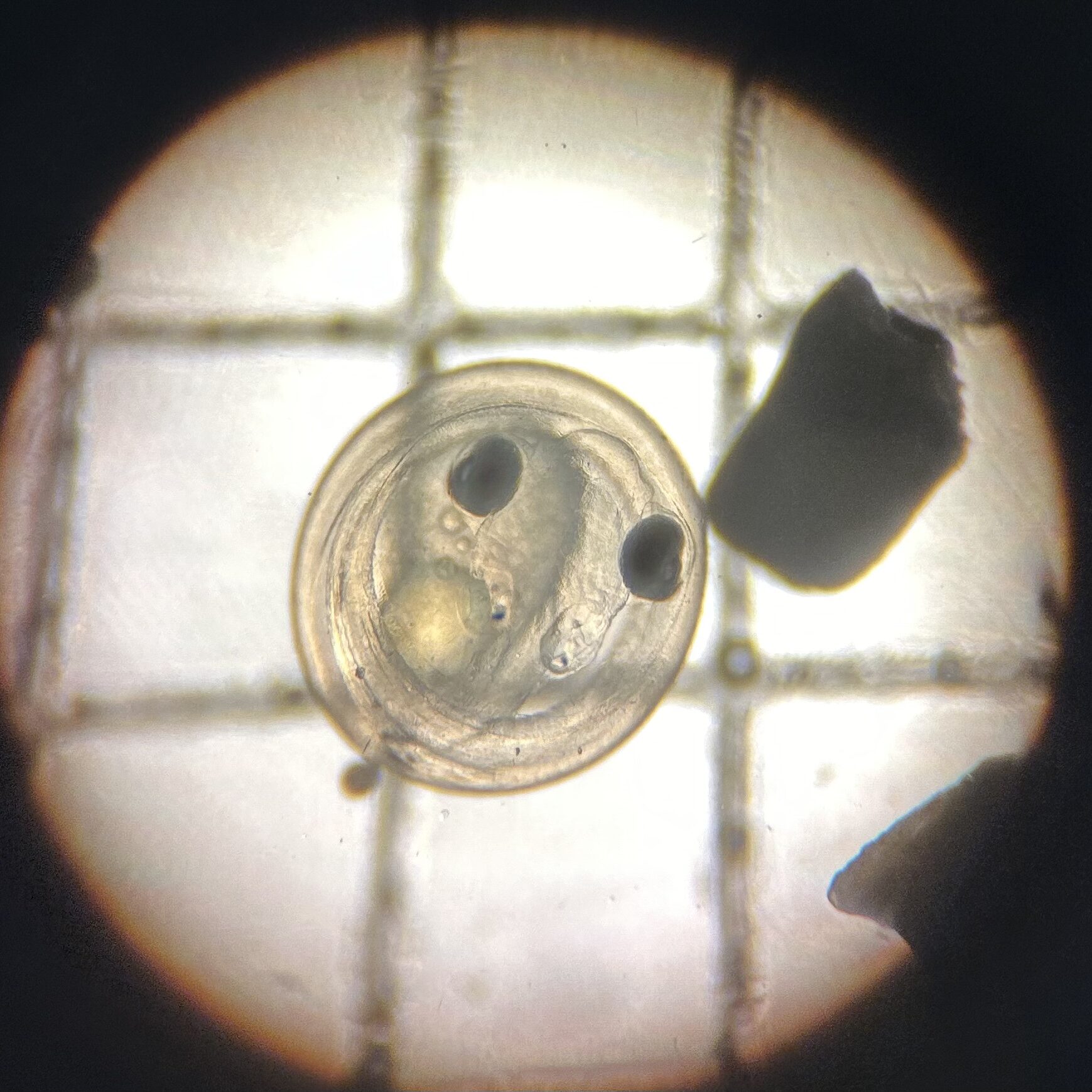
In the News


Take a scroll through the story map that UVic Community Mapping students made about our Songhees Walkway Pocket Beach restoration project:
*Master Carver Tom LaFortune, quoted in Alde, N. (2023, October 5). ‘Welcome Pole’: New 30-foot totem pole erected near Victoria International Marina. Victoria Buzz.
*Songhees: The Old Songhees Reserve. The Royal BC Museum.
*Andrew A. Duffy. "Beach reclamation gives new life to Lime Bay." Times Colonist, Jul. 23, 2023



